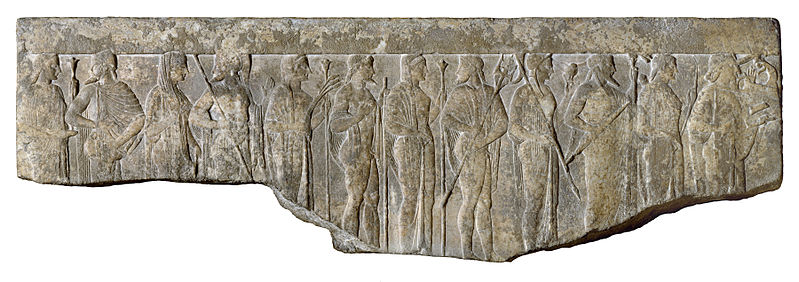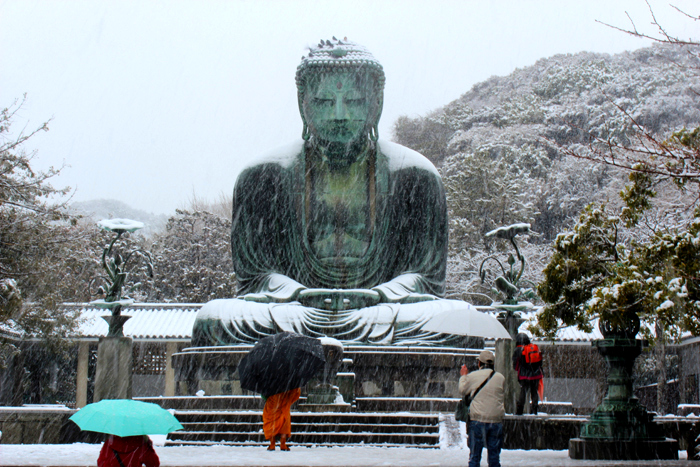Zeus in China? January 12, 2014
Author: Beach Combing | in : Ancient , trackbackThis blog has pioneered the scientific reporting of contacts between distant civilisations with our wrong place tag. Today strangehistory offers up a particularly satisfying hint of Greek culture penetrating China in the Hellenic period (crudely fourth century to first century AD) based on the work of sinologist and WANW in the making Lukas Nickel and a recent and crackingly good article of the same in the Bulletin of the School of Oreiental and African Studies. The evidence is circumstantial, but looking over it there is a strong sense that something needs to be explained and that Greek input is not the most incredible explanation to hand.
Now to the source. A second century Chinese text reports that the Emperor Quin Shi Huangdi (obit 210 BC) ‘collected the weapons of All-Under-Heaven in Xianyang, and cast them into twelve bronze figures, of the type of bell stands, each 1000 shi in weight, and displayed them in the palace.’ This is the first record of statue making from ancient China and Quin Shi Huangdi is best known today for his terracotta army: he seems to have had a thing about statues generally, something that had been absent – at least this is what archaeology suggests – in earlier periods of Chinese history. LN talks of each statue weighing between 61,000 and 87,000 kilos: about the weight of a Boeing 737! They were eleven metres high (about a third of the Statue of Liberty or the size of the Kamakura Buddha, pictured below for purposes of scale) and their feet were the length of a person – they were apparently portrayed sitting. The pedestals beneath their thrones were around five metres high so you would have needed a tall ladder to get up and walk over head-sized toe nails.
So much for scale: they were big and it is predictable enough that later emperors melted them down for coin. The crucial question though is where did Quin Shi Huangdi get the idea to build these statues, given that the Chinese didn’t do sculpture? Well, the Emperor placed inscriptions on the statues and, by great good fortune, the words of one (or all?) of the inscriptions survives in a text that might date to the third century AD: it is refreshing to know that it is not just European historians who have to pepper their texts with qualifiers. Once more the text is fascinating:
In the twenty-sixth year of the Emperor, when he first brought together all-under-heaven, divided the principalities into provinces and districts, and unified the weights and measures, [these?] giants appeared in Lintao. They were five zhang high and had feet six chi long. [the measurements noted above]
Lintao refers to the far west of China and might even be translated as ‘the west’. This chimes, in turn, with a first-century-AD text the Hanshu:
In the twenty-sixth year of the Emperor [221 BC] daren [big men] appeared that were five zhang tall and had feet of a size of six chi all dressed in foreign robes. There were twelve of them and they appeared in Lintao.
Now God only knows how these texts relate to each other and who is copying who and where there is independent if lost evidence. But, leaving aside textual problems, what were these ‘giants’ in the west? Creationists and anarcho-archaeologists (and others of that ilk) might start to get excited about the giants of Genesis and remember bones of twenty feet men dug up in the US, ‘mysteriously’ lost to science. But there is a far more credible explanation namely that these were statues seen by Chinese travellers in the west or even ‘to the west’ in the parts of central Asia penetrated by Alexander and his armies. And here Dr Nickel makes an important point: the Greek gods were said to be twelve; school children are still taught about ‘the twelve Olympians’ (see the image at the head of this post). He has also dug up a fascinating reference in Diodorus Siculus to the end of Alexander’s conquests in India.
Thinking how best to mark the limits of his campaign at this point, [Alexander] first erected altars of the twelve gods each fifty cubits high [about twenty metres] and then traced the circuit of a camp thrice the size of the existing one. Here he dug a ditch fifty feet wide and forty feet deep, and throwing up the earth on the inside, constructed out of it a substantial wall. He directed the infantry to construct huts each containing two beds five cubits long, and the cavalry, in addition to this, to build two mangers twice the normal size. In the same way, everything else which could be left behind was exaggerated in size. His idea in this was to make a camp of heroic proportions and to leave to the natives evidence of men of huge stature, displaying the strength of giants.
Had a Chinese visitor seen this or perhaps another instance of Alexander’s agrandising with statues or had one of Alex’s successors tried something similar at a now forgotten site in, say, Afghanistan? As noted above the evidence is circumstantial but eye-catching. LN concentrates on the terracotta army in his article (another post, another day) and makes interesting arguments that these depended on Greek influence. But for me the idea of a Chinese ambassador standing amazed beneath statues of Zeus, Poseidon, Aphrodite and others on a hill in Kandhar gives even more pleasure than a Macedonian directing works in a Chinese workshop. Can’t help thinking too of the massive Egyptian statues on the borders with the Sahara intimidating the hell out of any Nubian heading north.
Other wrong place examples? drbeachcombing At yahoo DOT com
16 Jan 2014: Louis writes in with this fascinating idea/fact/factoid. Can any reader find a source? ‘Reading about the statues reminded me of something that was told to me some years back. Apparently Buddhists did not want’\need\dare to make statues\likenesses of the Buddha, as he was more or less a god (or otherwise unknowable). However, as the tale goes, statues of Alexander the Great were seen by buddhists, and because his face was so different from the ones they knew, they copied it as the face of the Buddha, thereby celebrating his uniqueness. So it is said that most statues of the buddha (particular the earlier ones) have (copies of) the face of Alexander the Great…….. Talk about immortality… Don’t know if this is true, but I find it intriguing, in view of your post.’
16 Jan 2014: The Red Pill Junky writes instead: Re. your article about the possible Greek connection with the 12 giant statues of China, it’s interesting to point out how in the Book of Enoch, the Grigori (Watchers) who descended to Earth were also 12: Araqiel, Armaros, Azazel, Gadriel, Baraqel, Bezaliel, Chazaqiel, Kokabiel, Penemue, Sariel, Samyaza and Shamsiel. Should we look to the Semites instead of the Hellenics?’ Thanks RJP!




